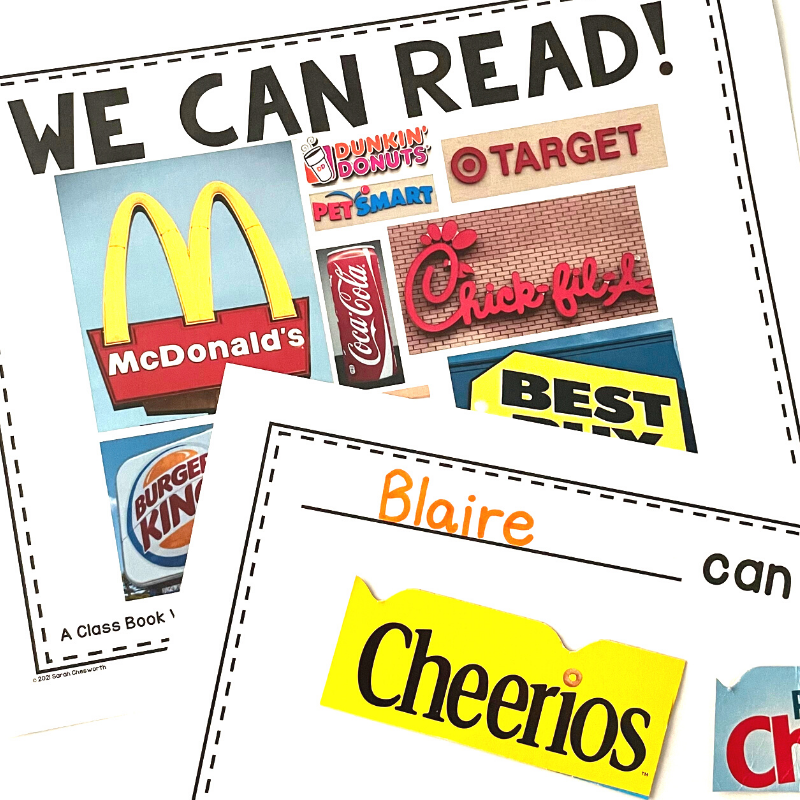Every early childhood classroom needs environmental print. It gets beginning readers excited to read! They learn this sign tells everyone to stop, or this label represents my favorite snack! This post will show you five easy ways to use environmental print in a preschool classroom.
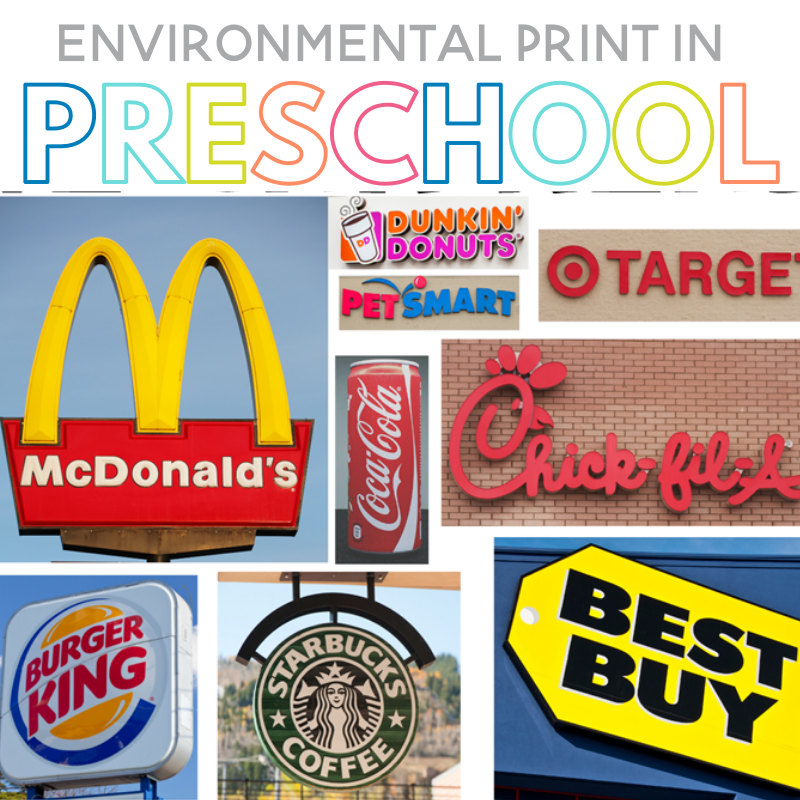
Raise your hand if you teach reading and writing! 
It’s pretty amazing to watch your own child figure out the world. For years, I have witnessed this with my students in the classroom, but it’s really neat getting to see it firsthand with a toddler. Very quickly, EK learned the letters in her name and now she is constantly pointing them out in her environment. It’s so powerful for her to see her letters all over the place! Your classroom should definitely be a literacy rich environment where children see print that is familiar and meaningful to them! So let’s get to it!
This post may contain affiliate links. For more information, you can read my disclosure statement here.
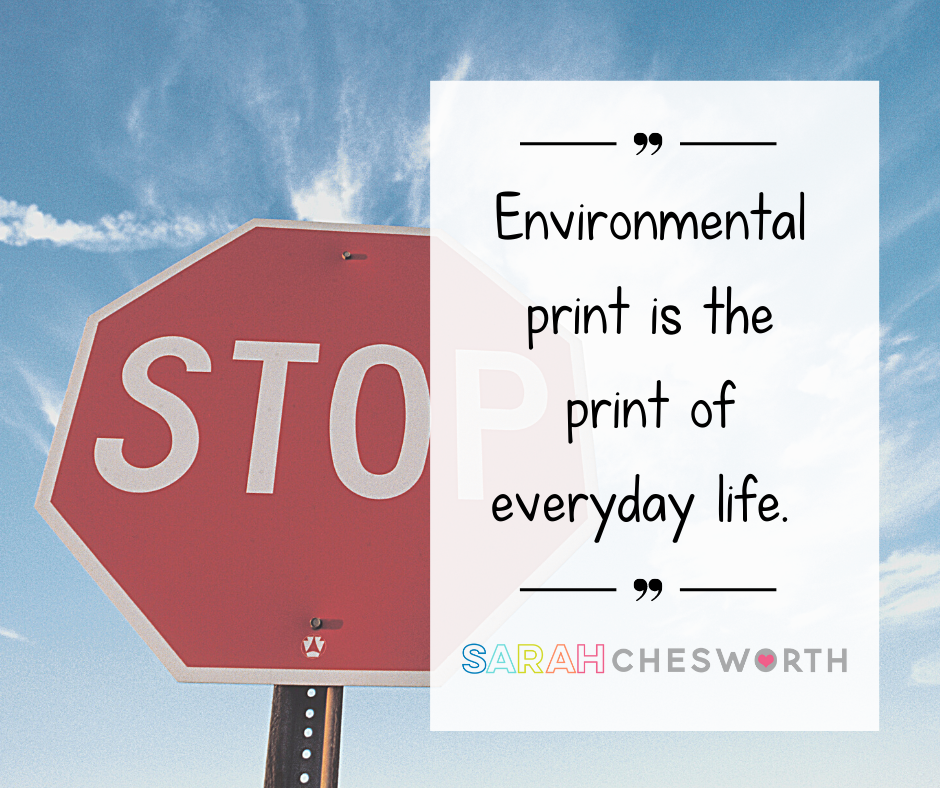
What is environmental print for kids?
Environmental print is the print of everyday life. It can be road signs, food box labels or billboards for restaurants and stores. It is considered an important pre-literacy skill and part of a print-rich environment. It develops and reinforces that writing communicates something to the reader. Little ones realize, “Hey everyone who sees this sign knows it means to stop!” Kids first learn to read this print in their world!
How can environmental print be used in a classroom?
A print-rich classroom develops pre-reading skills. Adding environmental print to your classroom will lay the foundation that writing communicates something to the reader. Your students will be eager to use these same skills to communicate and model what they see in the environment. This post will show you five easy ways to use environmental print in your classroom!
How to Add Environmental Print to Your Classroom:
Cut up cardboard boxes to create environmental print puzzles.
Round up those cereal boxes! Use scissors to cut out the front part of any clean cardboard food box. Start by cutting the front of the box into four simple rectangular pieces for students to put back together. Ask them to “read” the puzzle! As your students become more familiar with this type of puzzle you can make more pieces or mix multiple cardboard box puzzles together!
Add environmental print to your pretend and learn center.
If you don’t cut up your cardboard boxes for the activity above, save them for your pretend and learn center! Your preschool students will love shopping at a grocery store that looks like a real grocery store! Recruit friends and family to start saving clean food boxes or ask the parents of your students too! This is a great activity for developing vocabulary too and something I have enjoyed doing with my Kindergarten students and even my toddler at home!
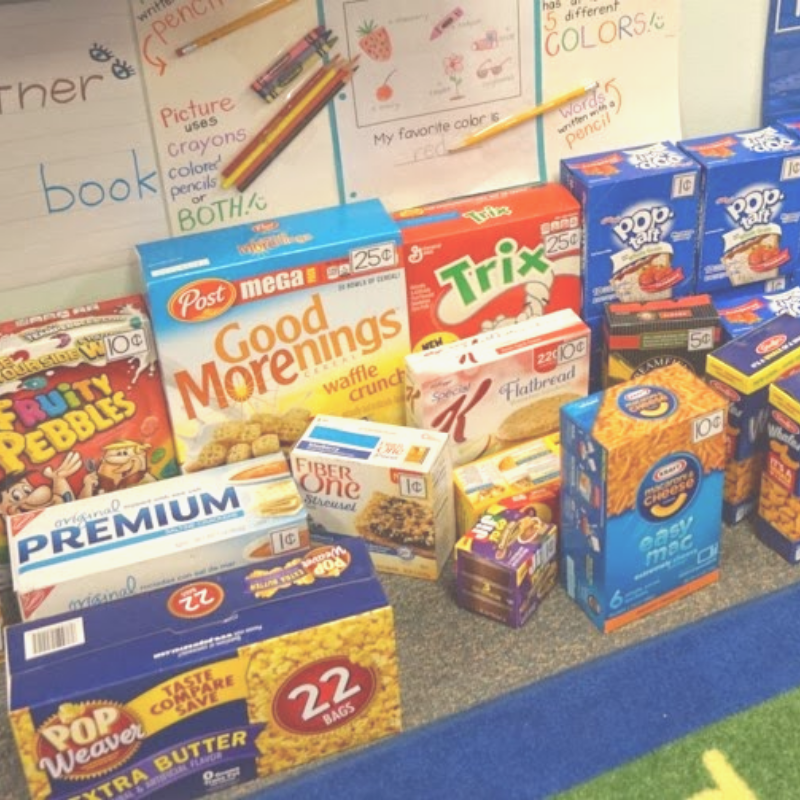
Create a class book.
If you are new here, you should know I really, really like class books! They are so beneficial for youngest students and you can write a class book about pretty much anything! Colors, shapes, numbers, the alphabet, you name it! This book is totally free and included inside of my printable class book set! If you want to learn more about class books be sure to check out this post, How to Make Meaningful Class Books with Preschool and Kindergarten Students.
This class book will show your students that they can read and uses environmental print . You can even involve parents in this class book too by asking them to help their child gather environmental print in their house. Just type a little blurb like this in your weekly email or newsletters:
We will be creating a book together about environmental print! These are words that your little one can already read in their environment like words on a cereal box (Fruit Loops), their favorite snack (Cheetos), favorite restaurant (McDonald’s) or a favorite store (H-E-B). Please cut out the part of the label they can read and send them to school!
Then, students can glue their environmental print examples on their book page and the whole class can enjoy reading the class book and building their confidence as readers and writers!
Create an environmental bulletin board that families contribute too.
We know that the family-school partnership is so important for children’s learning and success in school. Creating a bulletin board featuring environmental print is a wonderful way to include parents into the learning process and educate them on environmental print too! Set up a bulletin board in a central location in the school. Encourage families to collect and bring in environmental print they find and add it to the board. Students will love reading it as they walk through the hallway and take pride in seeing all the things they can read!
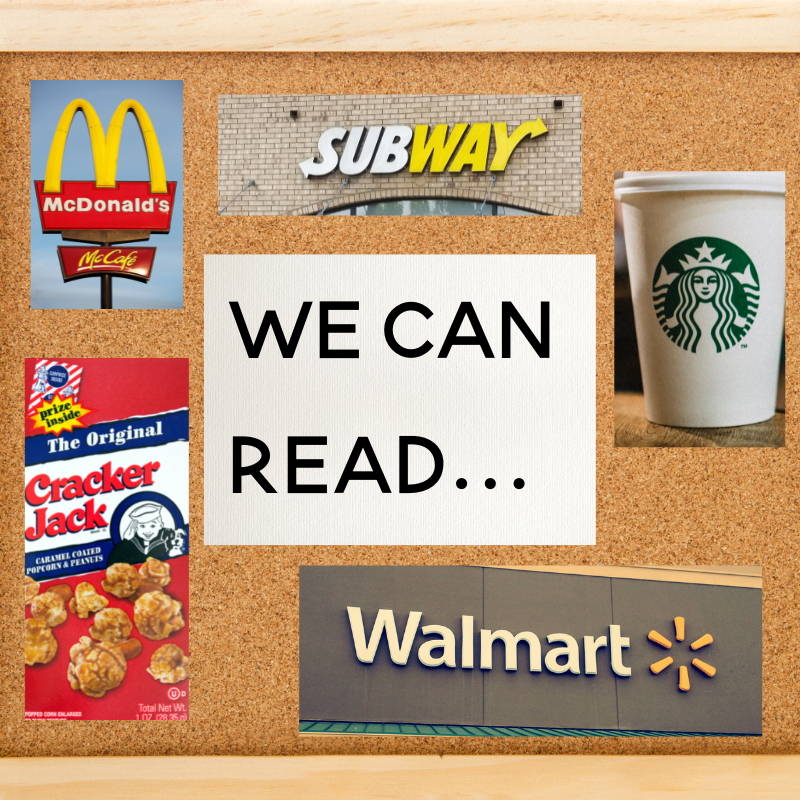
Use environmental print in a pocket chart.
I love a good pocket chart activity! You can use environmental print to create simple sentences that you can practice reading with your students. What sight words are your students working on? What about name recognition? Here are a few simple sentence stems that could be used:
- Child’s Name likes (environmental print picture)
- I like (environmental print picture)
- I can read (environmental print picture)
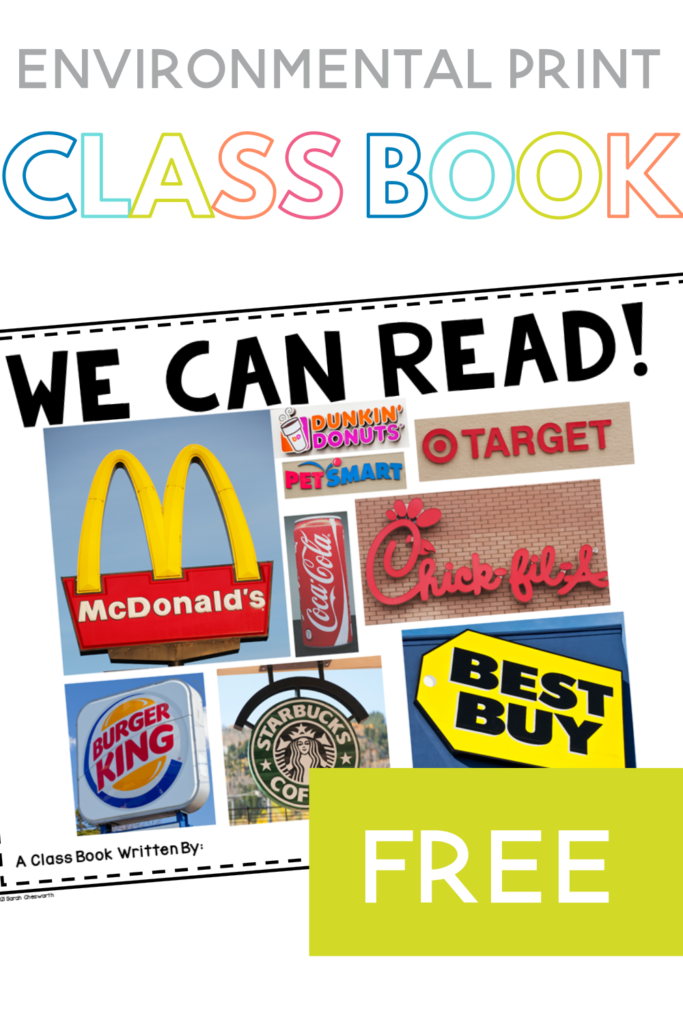
More Tips and Resources for Developing Early Literacy Skills:
Using Show and Tell to Teach Phonics
What is a Text to Self Connection and 10 Books You’ll Love Teaching With
5 Preschool First Day Activities to Set Your Year up for Success
Don’t forget to download your set of free printable class books and start writing and reading with your students! They are focused on the skills preschoolers and Kindergarten students need to know like numbers and letter recognition! If you want to learn more about class books check out this post, How to Make Meaningful Class Books with Preschool and Kindergarten Students.
I hope this post gave you a few new ideas for incorporating environmental print into your classroom!

